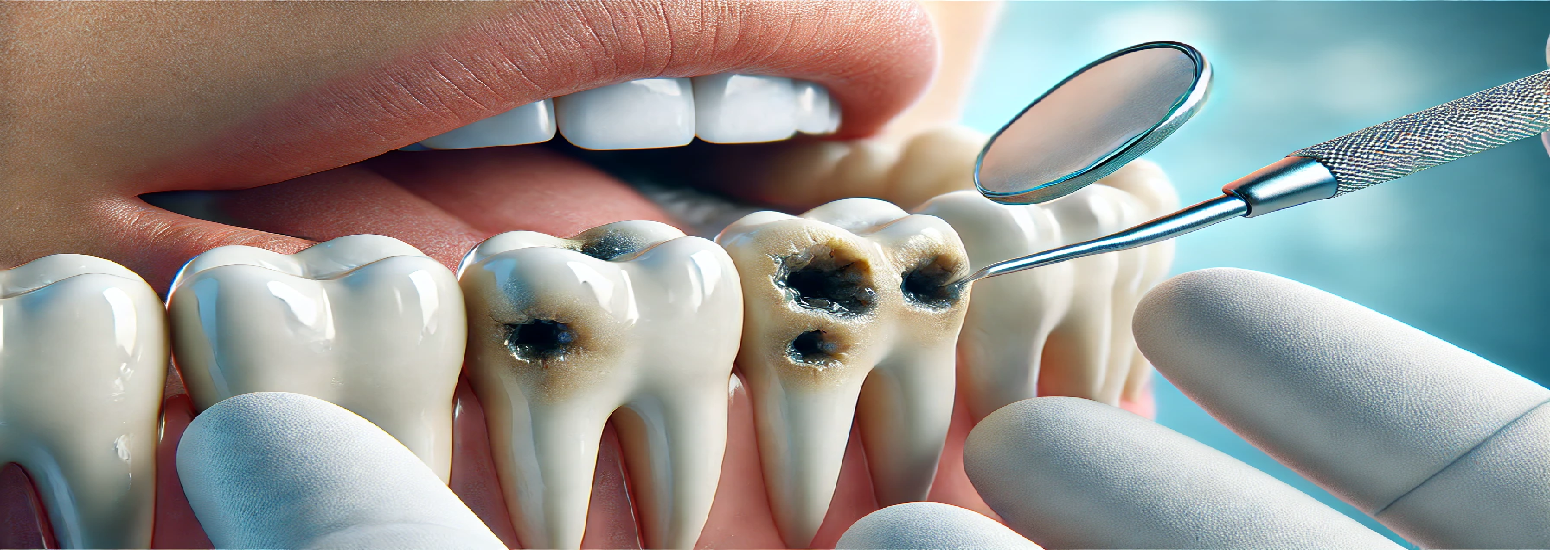
Cavities occur as a result of tooth decay. Tooth decay is the destruction of tooth structure. Tooth decay can affect both the enamel and the dentin. Tooth decay occurs when foods containing carbohydrates such as breads, cereals, milk, soda, fruits, cakes, or candy are left on the teeth.
Cavities occur as a result of tooth decay. Tooth decay is the destruction of tooth structure. Tooth decay can affect both the enamel and the dentin. Tooth decay occurs when foods containing carbohydrates such as breads, cereals, milk, soda, fruits, cakes, or candy are left on the teeth. Bacteria that live in the mouth digest these foods, turning them into acids. The bacteria, acid, food debris, and saliva combine to form plaque, which clings to the teeth. The acids in plaque dissolve the enamel surface of the teeth, creating holes in the teeth called cavities.

Many people think cavities only affect children, but changes that occur with aging make cavities an adult problem too. Recession of the gums, often associated with an increased incidence of gingivitis, can expose tooth roots to plaque. Also, sugary food cravings in pregnant women can make them more vulnerable to developing cavities.
Oral hygiene is necessary to prevent cavities. This consists of regular professional cleaning (every 6 months), brushing at least twice a day, and flossing at least daily. X-rays may be taken yearly to detect possible cavity development in high risk areas of the mouth.
Treatment can help prevent tooth damage from leading to cavities.
Dentists fill teeth by removing the decayed tooth material with a drill and replacing it with a material such as silver alloy, gold, porcelain, or composite resin. Porcelain and composite resin more closely match the natural tooth appearance, and may be preferred for front teeth. Many dentists consider silver amalgam (alloy) and gold to be stronger, and these materials are often used on back teeth. There is a trend to use high strength composite resin in the back teeth as well.